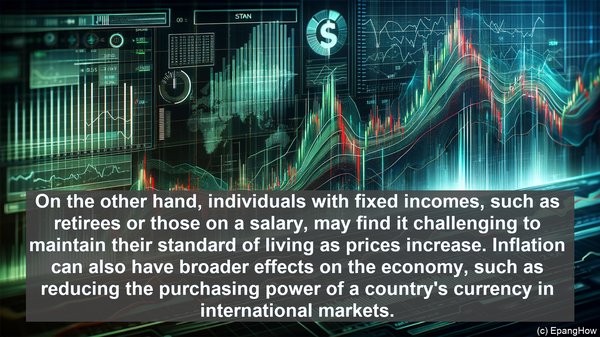Introduction: The Basics of Inflation and Deflation
Hello everyone! Have you ever wondered why the prices of goods and services change over time? Or why your money can buy more or less than it used to? The answers lie in the concepts of inflation and deflation. In this article, we’ll delve into the intricacies of these economic phenomena, exploring their causes, effects, and the ways they shape our financial landscape.

Defining Inflation: When Prices Take an Upward Turn
Let’s start with inflation. Simply put, inflation refers to the general increase in prices of goods and services in an economy over time. When inflation occurs, the purchasing power of money decreases, meaning you need more money to buy the same things. This can be observed in various sectors, from housing and healthcare to groceries and transportation. Inflation is often measured using an index, such as the Consumer Price Index (CPI), which tracks the changes in the prices of a basket of commonly purchased goods and services.
Causes of Inflation: Unraveling the Factors
Inflation can have multiple causes, but one of the primary drivers is the increase in the money supply. When there is more money in circulation, it leads to a greater demand for goods and services. As a result, producers can increase their prices, knowing that consumers have more money to spend. Additionally, factors like rising production costs, such as wages and raw materials, can also contribute to inflation. External factors, like changes in international trade or government policies, can further influence the inflation rate.
The Impact of Inflation: Winners and Losers
While inflation affects everyone, its impact can vary. Those who own assets like real estate or stocks often benefit, as the value of these assets tends to rise with inflation. On the other hand, individuals with fixed incomes, such as retirees or those on a salary, may find it challenging to maintain their standard of living as prices increase. Inflation can also have broader effects on the economy, such as reducing the purchasing power of a country’s currency in international markets.
Understanding Deflation: When Prices Take a Downward Spiral
Now, let’s turn our attention to deflation, the opposite of inflation. Deflation refers to a general decrease in prices, resulting in an increase in the purchasing power of money. While this might sound like a positive development, deflation can have its drawbacks. When prices fall, consumers may delay purchases, anticipating even lower prices in the future. This reduction in demand can lead to a decline in production, job losses, and a slowdown in economic growth.
Causes of Deflation: Unraveling the Factors
One of the primary causes of deflation is a decrease in the money supply. This can occur due to factors like reduced government spending, tighter monetary policies, or a decrease in lending by banks. Technological advancements and increased productivity can also contribute to deflation, as they often lead to lower production costs. Additionally, deflation can be a result of decreased consumer spending during an economic downturn.
The Impact of Deflation: A Double-Edged Sword
While deflation can benefit consumers in the short term, as their money can buy more, it can have negative consequences in the long run. Businesses may struggle to generate profits, leading to cost-cutting measures, layoffs, and a general economic slowdown. Deflation can also increase the real burden of debt, as the value of money increases, making it more challenging for borrowers to repay loans. These factors can create a cycle of reduced spending and further deflation, creating a challenging economic environment.

